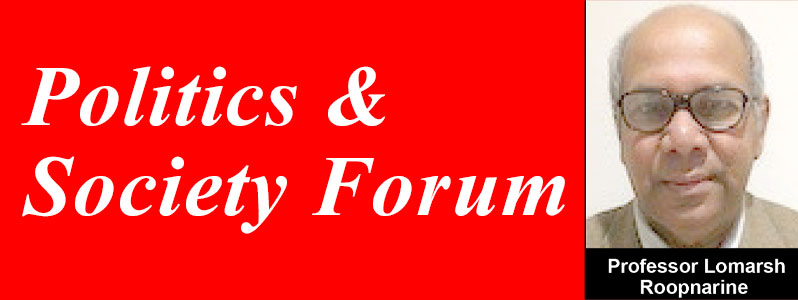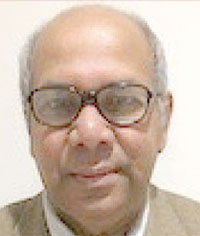ON August 1, 1838, the British Government finally abolished slavery in all its colonies and called upon other western colonial powers to follow suit. Slavery was abolished in the Swedish Caribbean in 1847; in the Danish and French Caribbean in 1848; in the Dutch Caribbean in 1863; in Puerto Rico 1873; in Cuba in 1886; in Brazil in 1888; in the United States in 1865.
Arguably, no less than 8,000,000 and no more than 10,500,000 arrived in the Americas. Of this figure, 480,000 Africans were brought to Suriname and Guyana. In 1838, after slavery, an estimated 80,000 to 100,000 Africans were living in Guyana. These Africans were brought mainly from West Africa and came from multiple ethnicities such as the Ashanti from Ghana, the Yoruba from Southwest Nigeria, the Ibo from South-Western Nigeria, and the Mandingo from Senegal.
Africans were snatched from the ranks of war captives, debtors, and persons found guilty of various criminal and social offenses. Others were kidnapped through raids and deceitful ways. European slave traders were initially involved in the capture of Africans, but, over time, when the capture of Africans became difficult, African chiefs or middlemen were rewarded with material objects to supply slaves.
Africans were brought to the Americas via the African Slave Trade in which ships would leave European ports and arrive in West Africa where material objects such as guns were traded for slaves. The ships would then leave western Africa with slaves and sail across the Atlantic Ocean to the Caribbean, the latter known as the Middle Passage. Deaths and diseases were high, as well as trauma, including suicide and resistance. Upon arrival, the slaves were distributed to various Caribbean plantations through an inhumane bidding process. The ships would then sail back to Europe with sugar and other tropical products. This pattern continued for three centuries.
Slave societies in Guyana were stratified according to power, prestige, and privilege. At the top layer were Whites, comprised of government officials, plantation owners, managers, merchants, clergies, small shopkeepers, craftsmen, and indentured servants. At the middle layer were free Blacks and free Coloureds, classified as Mulatto, Quadroon, and Sambo, and so on. This was a sandwich group that served as a social lubricant between the highest and lowest layer of Guyana’s slave society. At the lowest layer were the enslaved Africans who were further stratified into field, house, skilled and urban slaves. Each layer of stratification was hierarchically organised along firm boundaries.
The physical setting of the slave society was also stratified. The residential area was divided between the slavers and the enslaved. The slavers lived in the Great House, while the enslaved lived in barracks. The production area was divided into factories and fields. The former comprised various mills, boiling and curing houses, storage and work sheds, and a distillery. The vast fields surrounded the factory area, made up of sugarcane. The enslaved spent most of their time in the fields and factories.
The rhythm of plantation life of the enslaved revolved around working from daybreak to sunset, cultivating sugar cane as well as performing other tasks, like feeding animals and tending their kitchen gardens. Their lives were severely restricted and stunted by poor health and physical labour, replicating a killing field in which birth rates were low and death rates were high. The average lifespan of the enslaved was about 40 years, particularly those of field slaves.
Social prohibitions were placed on the enslaved, denying them an education as well as disallowing marriage, migration, or engagement in their own cultural and economic activities. Yet, some sections of African slave society did not accept the above restrictions, revolting with the intent to achieve outright freedom. The islands of Haiti and St. Croix witnessed a successful slave revolt in 1804 and 1848.
Two broad forms of African resistance, covert and overt, emerged during slavery. Covert resistance took the forms of maiming animals, faking sickness, and maroonage, while overt resistance took the form of direct destruction of plantation property and revolution. Both forms of resistance were intended to slow down production, to reduce profits, and eventually to abolish slavery. Two notable revolts of enslaved Africans occurred in Berbice in 1763, and in Demerara in 1823. The former was led by Cuffy, now the national hero of modern Guyana.
Slave resistance placed enormous pressure on the institution of slavery. Human bondage came under attack from various regions, from various movements, and from various people, based on various economic, philosophical, religious, and humanistic arguments. The result was that the slave trade was abolished in 1807, although it continued illegally until 1870, as well as the death knell to slavery in the Americas in different time periods in the nineteenth century, stated above.
Amid African slavery, and less analysed, was the formation of the American Colonization Society (ACS) in 1820 by white Americans in the Deep South to send “free” American blacks to the West African colony of Liberia. The idea was to provide Africans with an opportunity to return to their homeland as free individuals on the belief that freed blacks were too inferior for integration and might also revolt against the system of slavery. An estimated 13,000 Africans from the United States were shipped to Liberia during fifty years of the ACSs’ existence.
I am not sure how many Africans from Guyana were shipped to Liberia but Caree Banton’s book Auspicious Shores: Barbadian Migration to Liberia, Blackness, and the Making of an African Republic, might help in understanding this part of Afro-Guyanese history. Happy Emancipation Day (lomarsh.roopnarine@jsums.edu).



.jpg)








